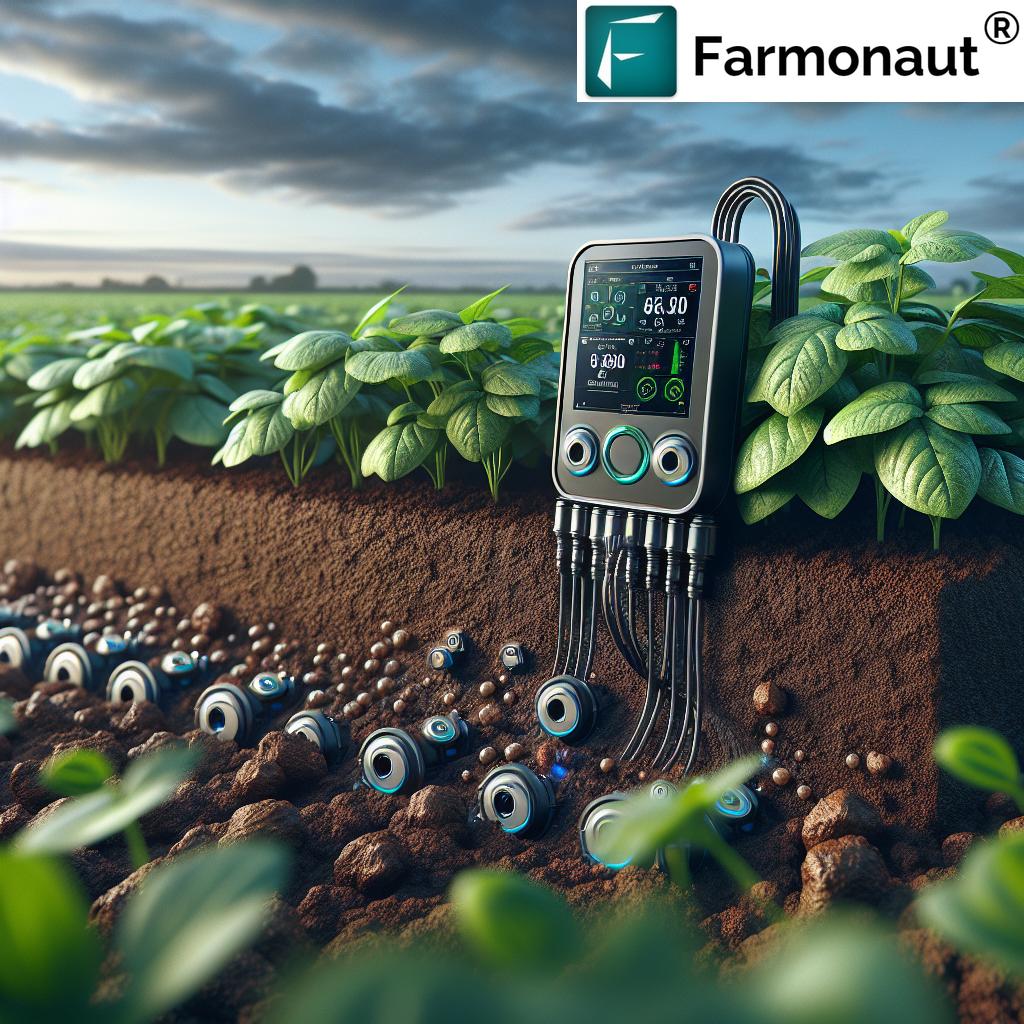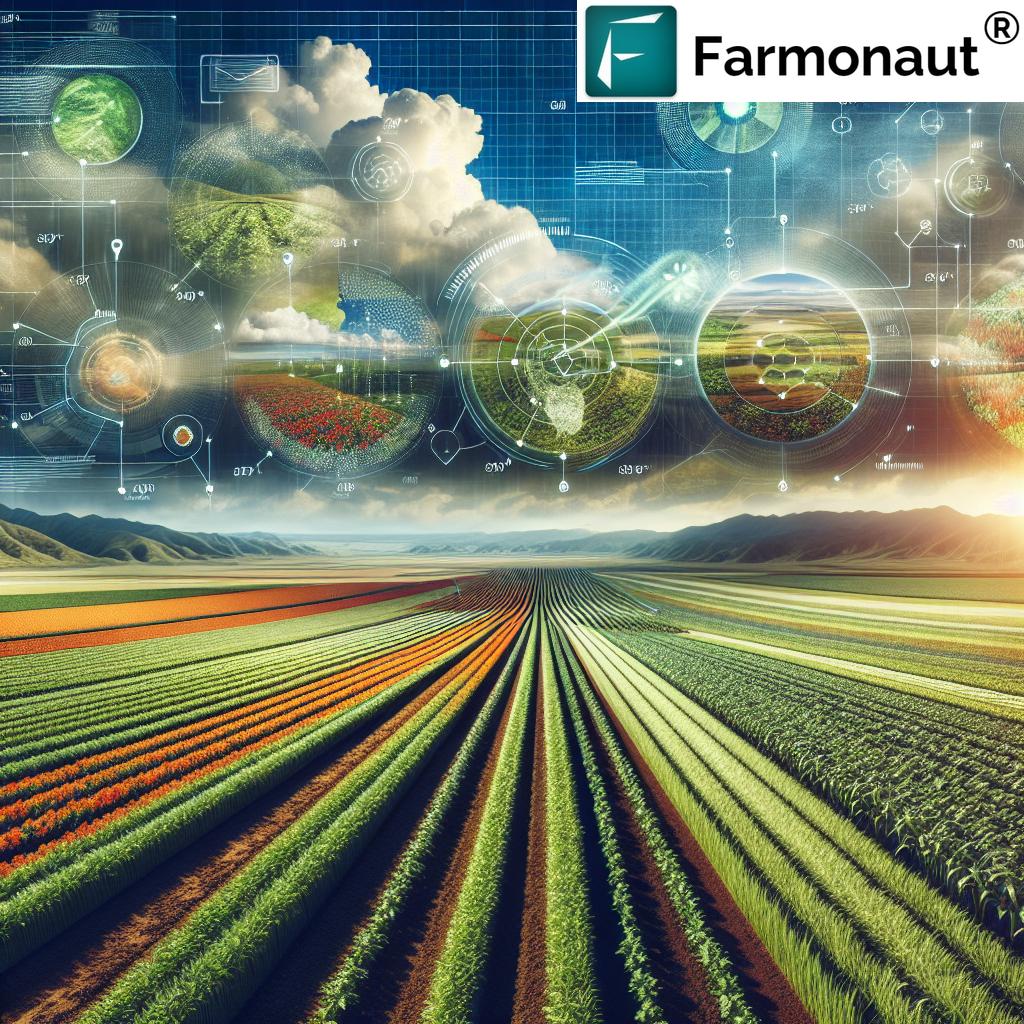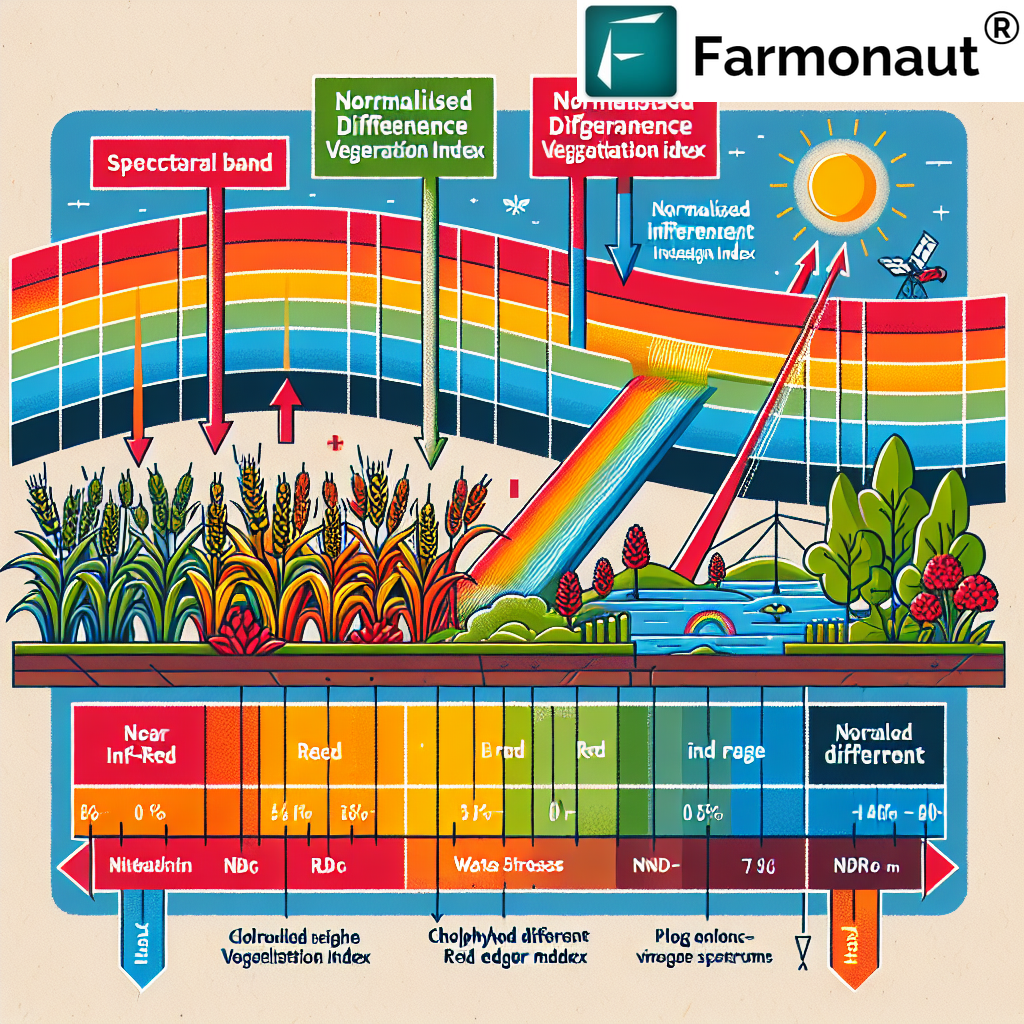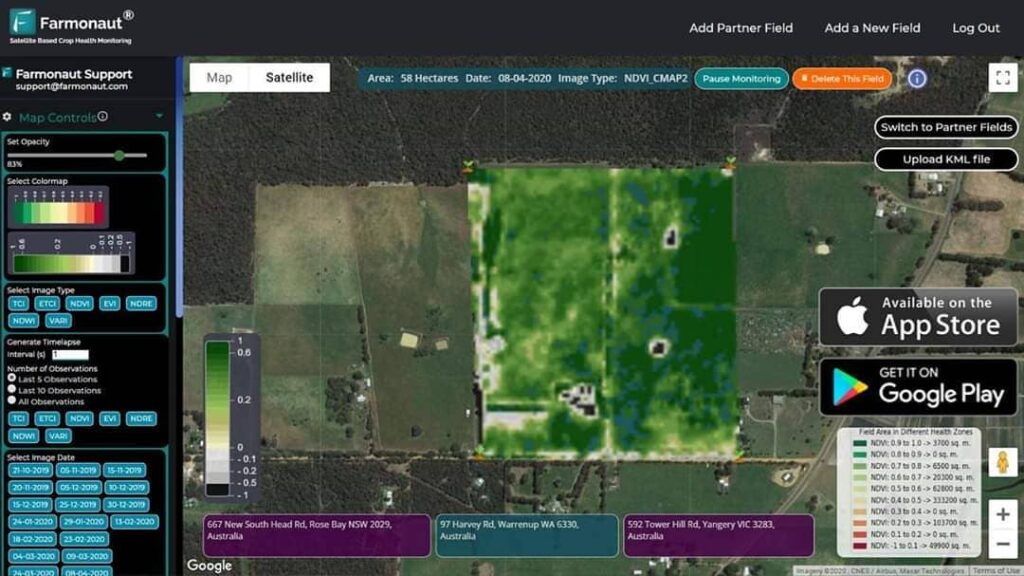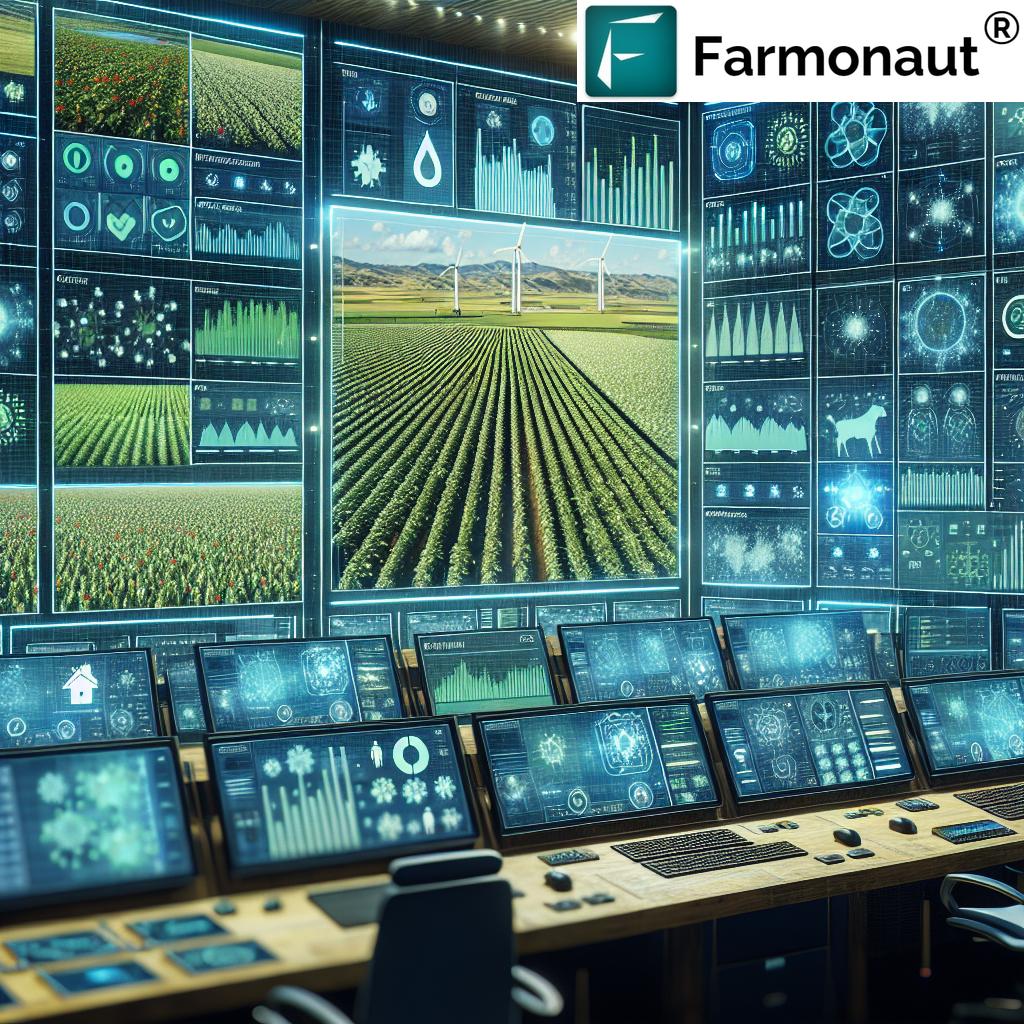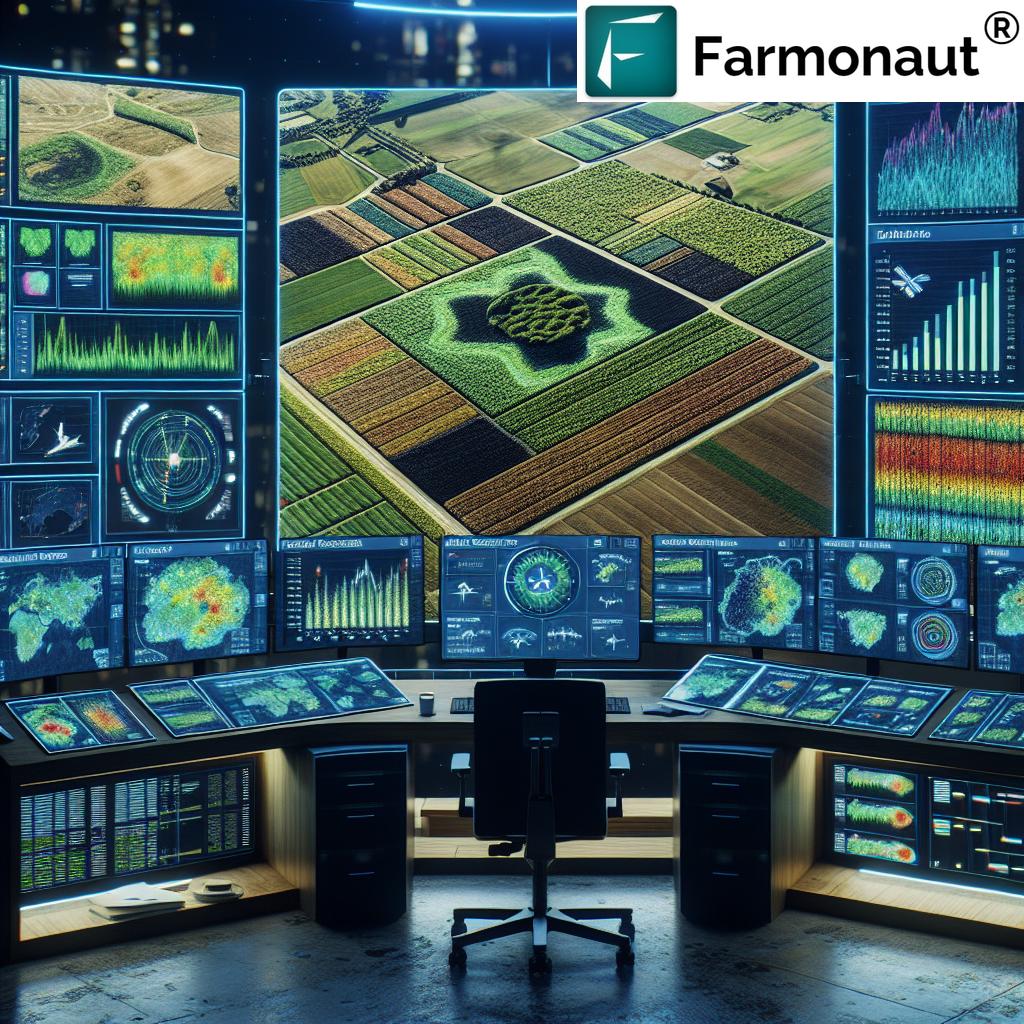Soil pH Sensor Secrets: 7 Shocking Benefits for Farmers
“Soil pH sensors can increase crop yields by up to 20% through precise nutrient management, according to recent studies.”
Introduction: Soil pH Sensors Empowering Modern Agriculture
In today’s data-driven agriculture, achieving optimal soil management is crucial for sustainable farming practices and increased productivity. One fundamental factor that often determines the success of crops is the soil’s pH level—a measure of its acidity or alkalinity. Soil pH sensors and advanced farming technologies have revolutionized how we monitor, analyze, and manage our farmlands. By enabling real-time soil data collection, offering accuracy, and supporting informed decisions, these devices are at the heart of modern precision agriculture technology.
Farmers today are transitioning from periodic lab-based soil tests to real-time monitoring using high-precision sensors, digital analytics, and seamless integration with applications like those provided by Farmonaut. This shift is not just about efficiency; it’s about environmental impact reduction in agriculture, crop nutrient optimization, and building a truly resilient, sustainable farming future.
Understanding Soil pH and Its Importance in Nutrient Management
Soil pH measures the concentration of hydrogen ions and determines whether soil is acidic (lower pH), alkaline (higher pH), or neutral. This parameter is critical because it directly affects the chemical forms of soil nutrients, thereby influencing their availability to plants. For most crops, an optimal pH range lies between 5.5 and 7.5, but several plants have adapted to thrive at values beyond this window (source).
- Nutrient Availability: Availability of key nutrients—such as nitrogen, phosphorus, potassium, and micronutrients—depends on soil pH, which influences their solubility and plant uptake efficiency.
- Chemical Interactions: Soil pH influences microbial activity, the breakdown of organic matter, and the chemical forms of nutrients and contaminants.
- Crops and Plant Growth: Each plant species requires a specific pH range for optimal growth. For instance, blueberries prefer acidic soils (pH 4.0–5.5), while alfalfa favors more neutral conditions.
Consistent monitoring of soil pH empowers us to:
- Choose the right crops for our local soil conditions (crop selection).
- Apply fertilizers more precisely for nutrient optimization (fertilizer application and soil amendment strategies).
- Reduce waste and minimize environmental impact in agriculture.
The Evolution of Soil pH Sensors: Technology, Measurement, and Key Features
Modern soil pH sensors have come a long way from traditional paper strip tests and manual chemical titration methods. The adoption of advanced sensor technologies has transformed soil pH measurement, making it far more accurate, reliable, and accessible.
Key Measurement Technologies in Modern Soil pH Sensors
- Electrochemical Sensors: These utilize pH-sensitive electrodes to generate electrical signals proportional to hydrogen ion concentration. Renowned for precise measurements and reliability.
Example: Glass electrode sensors offer ±0.05 pH accuracy and are widely used for in-field and laboratory measurements. - Optical Sensors: Employ changes in the optical properties of a reagent to detect pH, providing an alternative where electrical interference may be an issue.
- ISFET (Ion-Selective Field-Effect Transistor) Technology: These solid-state devices offer robustness and miniaturization, making them ideal for embedding in advanced farming technologies.
Advancements in sensor calibration, measurement principles, and material science contribute to higher accuracy, durability, and longer operational life. Many sensors now include features such as:
- Automatic Temperature Compensation: Ensures accurate readings across environmental temperature variations.
- Digital Output (RS485, 4-20mA, Modbus): Enables seamless integration with digital farm management systems, computers, and PLCs for real-time data analytics.
- Wireless Connectivity: Facilitates remote and continuous field monitoring in large or inaccessible areas.
- High-Precision Models: Some achieve ±0.05 pH accuracy and are capable of long-term, in-soil deployment.
As soil pH sensors continue to evolve, their integration into routine soil monitoring enhances field-level decision-making. This evolution, combined with digital platforms, empowers us to achieve unprecedented accuracy in agricultural management while reducing environmental impact.
Soil pH Sensor Secrets: 7 Shocking Benefits for Modern Farmers
Let’s unveil the “secrets” that make soil pH sensors such indispensable technologies in agriculture today, especially with the rise of precision agriculture technology and real-time soil data analytics.
- Ultra-Precise Soil Data for Informed Decisions
High-precision sensors deliver accurate pH readings, often within ±0.05 units. Such granularity in measurement is critical for optimal soil management. Now, instead of relying on broad estimates or seasonal lab reports, we can tailor every practice—sowing, fertilization, irrigation, amendment—based on real-time, accurate soil data. This leads directly to improved crop nutrient optimization and significant yield gains.
- Real-Time Soil pH Monitoring and Rapid Response
These sensors provide continuous, real-time monitoring of soil pH—enabling us to detect changes or trends as they occur. This is a game-changer during rainy seasons or after fertilizer applications when pH levels may fluctuate rapidly, threatening plant health or causing nutrient lockout.
- Precision Fertilization and Environmental Impact Reduction in Agriculture
By delivering real-time soil data to farm management systems, soil pH sensors inform exactly how much fertilizer is required for each section of a farm. This reduces over-application, saves inputs, and minimizes the environmental impact by preventing chemical runoff into water bodies.
- Seamless Integration with Digital Farm Management Platforms
Modern sensors feature digital outputs (such as RS485 or wireless connectivity), which allow for agricultural sensor integration with apps, PLCs, and cloud-based analytics tools. For example, the Farmonaut platform can integrate this data with satellite imagery, creating unified dashboards for all soil health metrics.
- Enhanced Intelligent Irrigation and Resource Management
By combining soil pH data with moisture sensors and temperature readings, we achieve truly intelligent irrigation scheduling. Water and nutrients are applied where and when most needed, avoiding both deficit and excess—improving crop growth and promoting sustainable practices.
- Improved Crop Quality, Health, and Yield
When plants are grown within their optimal pH range, nutrient uptake is maximized and stress is minimized. This results in not just higher yields, but also better-tasting, more marketable produce with extended shelf life.
- Long-Term Sustainability and Soil Health Protection
Continuous monitoring enables early detection of acidification or alkalization trends. Farmers can then take action—liming acidic soils, applying sulfur to alkaline patches—before irreversible degradation occurs. This proactive approach is essential for sustainable farming practices and safeguarding soil as a resource for future generations.
“Real-time soil pH monitoring reduces fertilizer waste by as much as 30%, promoting both cost savings and environmental sustainability.”
Impact of Soil pH Sensors vs. Traditional Methods
Understanding the quantitative advantages of soil pH sensors is vital for decision-makers and farm managers. The table below compares key aspects, highlighting where advanced sensors deliver the greatest impact:
| Aspect | Soil pH Sensors | Traditional Methods |
|---|---|---|
| Accuracy | ~95% (±0.05 pH units) | ~70% (±0.2–0.5 pH units) |
| Data Collection Frequency | Real-time, continuous | Monthly or seasonal |
| Labor Required | Low (automated, remote) | Moderate (manual sampling, lab analysis) |
| Cost per Hectare (Estimated) | $10/hectare/year | $8/hectare/season |
| Nutrient Management Efficiency | High (targeted, variable rate) | Moderate (generalized recommendations) |
| Environmental Impact | Low (less fertilizer runoff, better sustainability) | Medium-High (potential for over-fertilization, runoff) |
| Yield Improvement (Estimated) | Up to 20% | 5%–8% |
Farmonaut: Integrating Real-Time Soil Data for Precision Agriculture
The true power of soil pH sensors is unlocked when their data becomes part of a holistic precision agriculture technology ecosystem.
Satellites, Sensors, and AI: Farmonaut’s Vision
Farmonaut stands at the cutting edge of agricultural sensor integration by providing a platform that combines real-time crop health monitoring, satellite analytics, and environmental sensing. This creates a centralized hub for all soil, moisture, and weather data, making management decisions truly data-driven.
- Satellite-Based Crop Health Monitoring
Farmonaut’s platform deciphers soil moisture dynamics, vegetation indices, and potential stress zones by leveraging large-scale farm management tools. This helps managers visualize macro and micro-level field conditions and apply interventions precisely where needed. - Personalized AI-Based Advisory
With Jeevn AI Advisory, Farmonaut delivers actionable recommendations based on the fusion of soil sensor data, satellite metrics, and local weather. This means our nutrient, irrigation, and amendment strategies are tailored to our specific field conditions. - Blockchain-Based Product Traceability
For growers, exporters, and agribusinesses aiming for premium markets, Farmonaut’s product traceability solutions ensure transparent supply chains. Accurate records of all field operations, including soil pH management, help prove sustainable practices and build brand trust. - Carbon Footprinting for Environmental Compliance
Sustainability is central to modern agriculture. Farmonaut’s carbon footprinting tools help agribusinesses track, benchmark, and reduce field emissions—aligning with regulatory requirements and consumer expectations. - Fleet Management & Resource Tracking
Efficient farm operations rely not just on soil but also on machinery logistics. Farmonaut’s fleet management solution ensures vehicles and equipment are optimally deployed for timely soil correction and input applications. - Access via Multiple Channels & APIs
Farmonaut delivers these insights through mobile/web apps and a robust API (API Developer Docs), making advanced sensor-driven analytics accessible for everyone—from individual farmers to large agribusinesses and NGOs.
By bringing all these elements together, Farmonaut ensures that soil pH sensor data is not siloed, but actually drives improved productivity, profitability, and sustainability for every farm.
Challenges, Maintenance, and Future Directions in Soil pH Sensing
Despite remarkable progress, some challenges in soil pH sensor technology persist:
- Calibration & Maintenance: Sensors require routine calibration with standard pH buffers to ensure ongoing accuracy. Neglecting this can lead to drift in readings and mismanagement of soil amendments.
- Soil Heterogeneity: Natural variations in soil composition, texture, and organic matter content affect sensor readings. Accurate field mapping requires multi-point sensor arrays or geostatistical interpolation.
- Environmental Durability: Long-term exposure to soil moisture, temperature swings, and chemicals can degrade sensors. Advances in housing materials and coatings are mitigating these issues.
- Cost Considerations: While advanced sensors offer high value, initial investment costs can be a barrier, especially for smallholder farmers. However, ongoing technological advancements and competition are driving down prices and fueling wider adoption.
Emerging Innovations & The Road Ahead
- Sensor Fusion: Integration of pH, moisture, temperature, and electrical conductivity measurements for holistic soil characterization in a single probe.
- Wireless Networking: Expansion of IoT-based wireless sensor networks for real-time, large-scale field deployments—minimizing manual labor.
- AI & Machine Learning: Advanced algorithms for interpreting sensor signals, predicting pH-related issues, and prescribing precise amendments.
- Affordability: Modular sensor platforms and digital apps (like those by Farmonaut) bring high-tech soil analytics to the entire global farming community.
The fusion of real-time soil pH monitoring with AI-driven farm management signals a transformative future, paving the way for environmentally conscious, profitable, and resilient agriculture for decades to come.
Frequently Asked Questions
What is the optimal pH range for most crops?
The optimal soil pH range for most crops is between 5.5 and 7.5, which maximizes nutrient availability and supports healthy plant growth. However, some species have adapted to more acidic or alkaline soils.
How do soil pH sensors improve crop yield?
By delivering accurate, real-time pH measurements, sensors enable precision fertilization and timely soil amendments. This reduces nutrient lockout, improves nutrient uptake, and can increase yields by up to 20%.
How often should soil pH be monitored?
For precision agriculture, continuous or at least weekly monitoring is ideal—especially during critical growth stages or after major inputs. Soil pH sensors allow for real-time, continuous data collection, which is much more effective than periodic manual tests.
Can soil pH sensors be integrated with other technologies?
Yes! Most modern sensors support digital outputs (RS485, Modbus), WiFi, or cellular connectivity, enabling seamless integration with digital farm management platforms, such as Farmonaut.
How do I choose the right soil pH sensor?
Consider measurement precision, durability, connectivity options, need for automatic temperature compensation, and compatibility with your management system. High-precision sensors with digital outputs are best for large and precision-driven operations.
Is pH sensor technology accessible for small and medium-scale farmers?
Absolutely. Platforms like Farmonaut are democratizing access by using affordable sensor integrations, satellite analytics, and app-based data delivery so even the smallest producers benefit from precision technologies.
Conclusion: Pioneering a Data-Driven, Sustainable Agricultural Future
The adoption of soil pH sensors marks a significant milestone in agricultural innovation, fueling the transition toward precision agriculture technology, real-time soil data management, and sustainable farming practices. By enabling farmers to accurately measure, monitor, and manage soil acidity or alkalinity, these advanced devices optimize crop nutrient availability, reduce input costs, and protect the environment—all while boosting productivity.
For those embracing both sensor-driven analytics and the integrative power of platforms like Farmonaut, the benefits multiply. Whether you’re managing a single plot or orchestrating a large-scale agribusiness, real-time insights unlock new efficiencies, yield potential, and resilience.
- Enhance crop health, quality, and economic returns
- Advance sustainability by minimizing run-off, reducing carbon footprint, and preserving soil health
- Promote transparent, data-backed traceability in agricultural value chains
Now is the time for all of us in agriculture to embrace the data-driven revolution—by integrating soil pH sensor technology, AI-based advisories, and connected farm management solutions like Farmonaut to secure the future of farming for generations to come.







